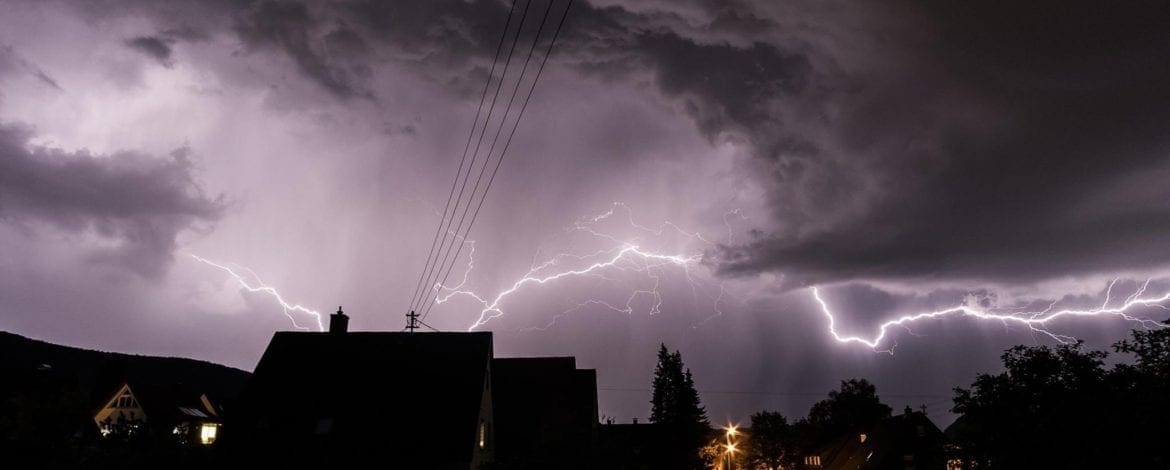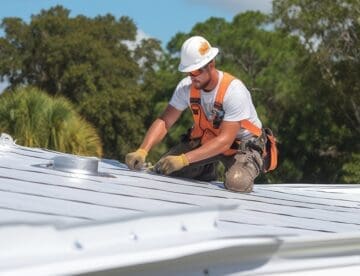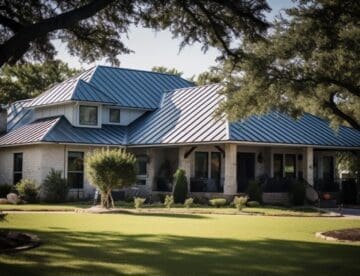Lightning strikes are a common sight in Florida, especially during hurricane season. Charged with power sometimes higher than 100 million volts, these swift bolts of lightning can do some significant damage to any object they hit. Unfortunately, lightning strikes can damage a roof or other home construction.
In all likelihood, your home is your most valuable investment. As a homeowner, knowing what steps you should take immediately after a lightning strike can protect your investment and save you a lot of money on repairs. More importantly, it can also save you and your family from injuries or worse. Below are the most important things you should know so you can best deal with lightning strikes and the roof or home damage they can cause.
The Lightning Capital of the US
Florida has many nicknames. Over the last few years, the state has earned its newest moniker, “The Lightning Capital of the US.”
Florida’s geography is the main reason why the state sees so many thunderstorms — especially during the summer. Set between the Atlantic Ocean and the Gulf of Mexico, the state gets strong sunshine and warm and moist air. Combined, they create sea breezes that generate severe and harsh storms.
The area between and Orlando is primarily known for heavy thunderstorms and lightning. Dubbed “lightning alley,” this territory gets up to 50 lightning strikes per one square mile every year. Unfortunately, the state of Florida leads the nation in lightning-related injuries and fatalities. Between 2009 and 2019, 280 people were killed by lightning strikes in Florida.
Lightning Strikes Cause Roof and Home Damage
Regardless of its path, lightning is damaging to every surface of the house it touches. This especially goes for your roof. A direct bolt of lightning to the roof can cause severe damage to the structure. Not only can it puncture the shingles, but it can also tear through the entire roofing system and even destroy the attic.
If your roof gets struck by a more powerful bolt, it can come apart almost entirely. Shingles and gutters can be completely torn, and the surrounding materials heavily damaged. What’s more concerning is that a direct hit that also catches the wiring in your house can cause an electrical fire on your roof or in your attic.
Although your roof bears the brunt of the damage, the shockwave of the lightning impact can cause damage to your entire house. This wave can sometimes be powerful enough to dislodge even chimney bricks. Falling bricks and other materials from your roof can extend the destruction to the vents, pipes, and other household components.
How Can Lightning Get Inside My Home?
There are three main ways lightning can get inside your house. The most common way is through a direct strike on the structure. The other two ways lightning can enter your home are through the ground and through pipes or wires extending outside your house.
Once in your house, lightning can travel through a variety of objects in your home. This includes electrical devices, plumbing, and even concrete walls. This is why all Florida households should have specific structural protection against lightning strikes and a surge protection system. Most houses in the region are sound enough to survive a bolt of direct lightning hit. But, a heavy lightning bolt can still deal a lot of damage to an average Florida house.
What to do Immediately After a Lightning Strike
If you’re wondering if your house has been struck by lightning before, it probably hasn’t. A direct lightning strike is easily recognizable, mainly due to its heavy explosive sound. Although the chances of your home being hit by lightning are small, knowing which actions to take right away can make a huge difference.
If this happens, the first thing you should check is potential roof damage and if a fire has started. But we strongly discourage you from going up on your roof to check it on your own. If the roof has been damaged, walking on it might cause it to collapse entirely. Even under normal conditions, a roof can be a dangerous place. So it’s best to leave this part to skilled licensed professionals.
After conducting these two emergency checks from the safety of a sturdy and stable ladder, visually inspect other parts of your home. Test the water pressure and make sure to check the landlines and circuit breakers. Keep in mind, there could always be unseen damage. To avoid any further problems from hidden lightning strike damage, have a licensed roofing contractor inspect your roof every six to twelve months.
Lightning Strikes: Protect Your Roof and Home from Damage
If lightning has struck your home directly, it may have caused structural damage to your roof. After a lightning bolt hits the roof, you must act right away. It doesn’t matter if you’re only dealing with a few cracked shingles instead of a hole in the roof. The sooner you act to fix any damage, however minor, the better.
Get a reliable and trustworthy roofing contractor to inspect the roof’s exterior and interior and the attic or crawl space. Structural damage from lightning strikes can be dangerous. In some cases, it can lead to injuries and even fatalities. That’s why we invest great care and attention into every project we take on.
At Code Engineered Systems, we implement the latest and best industry practices to ensure that you get the best result. We are always at your disposal and eager to hear from you. If you need an emergency roofing service or want to learn more about how to protect your roof and house from storm damage, we’re here to help. Call us today at 813-373-9088. Or fill out our online form and we’ll get back to you promptly.




